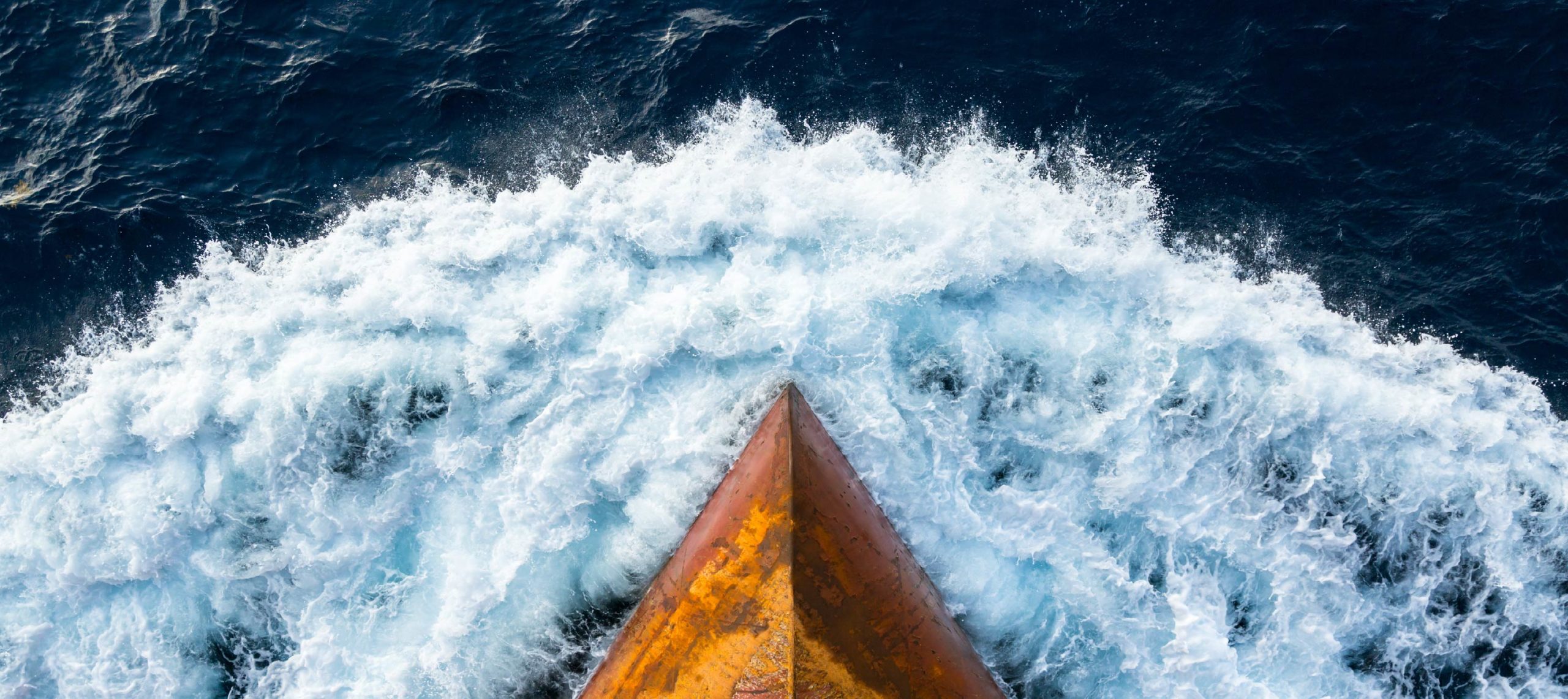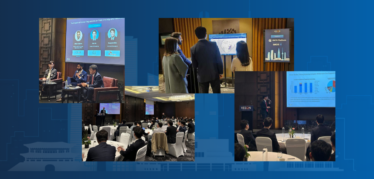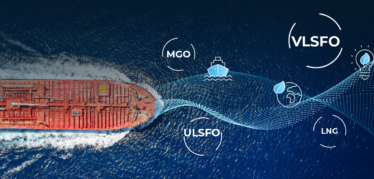As decarbonization in the maritime shipping industry continues to intensify, emissions have become a key factor in decision making for organizations that deal with marine freight. There are numerous opportunities to operate more sustainably throughout the voyage lifecycle—from pre-fixture analysis and scheduling, to ongoing voyage operations, settlement, and beyond. Surfacing specific ways that decarbonization comes into play at each point in the commercial workflow empowers organizations and their various stakeholders to make small sustainability improvements that add up to make a significant impact.
Let’s take a look at ten ways that sustainability should factor into decision making at every stage of your marine workflow. Click one of the topics below or scroll down to read them all.
- Pre-Fixture Market Assessment
- Vessel Emissions Estimates
- Carbon Expense Considerations
- Scheduling
- Voyage Planning
- Bunker Management
- Deviation Analysis
- Mid-Voyage Analysis and Reporting
- Reporting at Voyage Settlement
- Post-Voyage Analysis
AA
1. Pre-Fixture Market Assessment
For charterers, in-depth market assessment is critical for selecting an appropriate vessel to carry a given cargo, and sustainability has become a key selection criterion. With the ability to gain access to GHG and vessel ratings through parts of the VIP Chartering workflow, organizations can exclude vessels from consideration that do not meet their own sustainability standards when evaluating supply in the market. In addition, organizations can exclude vessels with longer repositioning legs to reduce bunker consumption. Marine Protected Areas (MPAs) are another important consideration, and organizations can further optimize vessel selection with visibility into time spent in MPAs and speed in Whale Areas through Oceanbolt’s market intelligence platform.
2. Vessel Emissions Estimates
Visibility into emissions estimates is important for organizations on both sides of the contract. With the ability to compare emissions estimates across vessels, shipowners and operators can readily select a vessel that can action a given cargo in the most environmentally efficient way. On the other hand, for tonnage charterers, an understanding of projected emissions can help to inform carrier decisions.
3. Carbon Expense Considerations
Decarbonization has important implications for costs throughout a voyage, particularly with regulations like EU / ETS on the horizon. By considering carbon as an attribute of the voyage P&L, commercial operators can include a carbon price in voyage estimates and evaluate the anticipated emissions cost impact on voyage profitability. Organizations can then optimize their business around additional carbon expenses that may arise, effectively prepare for the P&L implications of carbon emissions, and communicate critical details to their counterparties.
4. Scheduling
In order to minimize fuel consumption, it is important to approach voyage scheduling in a manner that is focused on identifying vessels that can execute cargoes—or cargoes that best match available vessels—in a way that reduces ballasting and repositioning. In addition, scheduling is a critical time to identify opportunities to maximize fleet utilization, minimizing the time vessels spend idling and burning additional fuel.
5. Voyage Planning
Voyage and route planning represent yet another significant opportunity to reduce the carbon impact of a voyage. Are there feasible alternative routes that could reduce fuel consumption? What fueling stops are planned? Are there any opportunities for slow steaming? All of these are important questions to consider when scheduling a voyage in order to ensure that it is carried out as sustainably as possible.
6. Bunker Management
Given that bunkering decisions have both a financial and environmental impact, it is critical to actively manage bunkers as a voyage progresses. Organizations must maintain a complete understanding of bunker consumption throughout the voyage, and ensure seamless communications between the bunker desk and the vessel to drive financially- and environmentally-optimal purchasing decisions.
7. Deviation Analysis
As we know, a voyage can be impacted by any number of external conditions outside of an organization’s control. When voyage adjustments must occur on the fly, organizations require the ability to perform deviation analysis in order to understand the emissions impact of these adjustments and ensure that emissions remain as low as possible.
8. Mid-Voyage Analysis and Reporting
As a voyage progresses, organizations should have complete visibility into key sustainability metrics at all times, such as emissions and bunker consumption. In addition, they require a means to easily transform this data into reporting formats and share these reports with key internal and external stakeholders. This enables the organization to ensure the voyage is performing as planned and surface potential opportunities for improvement in the future.
9. Reporting at Voyage Settlement
Once the voyage has concluded, it is important for an organization to report on voyage emissions and other key metrics. They should then have the ability to easily view and understand the total emissions of a commodity trade or movement to have a complete picture of a voyage’s environmental impact. This is important not only from an internal perspective, but also from a counterparty perspective and a regulatory perspective.
10. Post-Voyage Analysis
At the conclusion of every voyage, organizations are focused on analyzing performance in order to optimize future decisions. This is especially important from a sustainability standpoint. With complete visibility into key metrics and emissions trends, organizations can track progress towards their sustainability goals, spot opportunities for improvement, and determine whether positive trends have the potential to be replicated across the organization.
Understanding how sustainability factors into the commercial maritime workflow is key to making more sustainable decisions at every stage, optimizing future voyages, and shaping a more sustainable future for the entire industry. At Veson Nautical, we are focused on empowering our clients to carefully consider decarbonization in their workflows through enhancements within our solutions and Platform Partnerships with sustainability-focused solution providers through the Veson Partner Network.
Interested in learning more about decarbonization in the maritime shipping industry and how Veson is empowering our clients to make more sustainable decisions? Visit our sustainability webpage.



 Giftson Eliyesar
Giftson Eliyesar
 Hongbeom Park
Hongbeom Park
 Oliver Kirkham
Oliver Kirkham